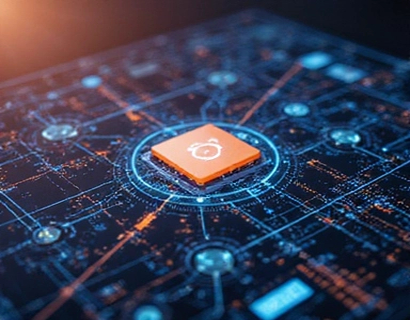Unlocking the Potential of AI-Powered Chat Interfaces in Nanobot Technology Education
Introduction to AI-Driven Learning in Nanotechnology
The integration of artificial intelligence (AI) into educational platforms has revolutionized the way we access and understand complex subjects, including nanobot technology. This specialized field, which deals with the design, construction, and application of nanoscale robots, presents unique challenges due to its intricate nature and rapid advancements. An AI-powered chat interface emerges as a pivotal tool, offering a dynamic and interactive learning experience tailored to both educators and students. This article delves into how such interfaces can provide expert insights, ensure content verification, and create a secure, child-friendly environment for learning about nanobots and their applications.
Understanding the Role of AI in Education
AI technologies, particularly chat interfaces, have become indispensable in modern education. These tools can simulate conversations with experts, providing users with real-time, personalized information. In the context of nanobot technology, an AI chat interface can bridge the gap between complex scientific concepts and accessible learning materials. By leveraging natural language processing and machine learning, these chat systems can adapt to the user's level of understanding, offering explanations that are both accurate and comprehensible.
Specialized Insights on Nanobot Technology
Nanobot technology represents a frontier in engineering and medicine, with potential applications ranging from targeted drug delivery to environmental cleanup. An AI-powered chat interface can serve as a gateway to this specialized knowledge, providing detailed insights into the design principles, materials science, and operational mechanisms of nanobots. For educators, this means access to up-to-date research and expert opinions, which can be integrated into curricula to enhance student engagement and understanding.
Content Verification and Educational Integrity
Ensuring the accuracy and reliability of information is paramount in educational settings. An AI chat interface dedicated to nanobot technology can incorporate rigorous content verification processes, cross-referencing data from reputable sources and peer-reviewed journals. This not only guarantees that the information provided is current and accurate but also builds trust among users. For students, this means a safe and reliable resource for research and learning, free from misinformation.
Creating a Child-Friendly Learning Environment
The complexity of nanobot technology may seem daunting to young learners, but an AI chat interface can make these concepts accessible and engaging. By designing a child-friendly version of the chat, with simplified language and interactive elements, educators can introduce nanotechnology to younger audiences. This approach not only fosters early interest in STEM fields but also ensures that learning is enjoyable and safe, with content tailored to different age groups and educational levels.
Interactive Learning Experiences
One of the most significant advantages of an AI-powered chat interface is its ability to create interactive learning experiences. Students can ask questions, receive immediate feedback, and engage in simulated experiments or discussions about nanobot applications. This interactivity not only enhances comprehension but also encourages critical thinking and problem-solving skills. For educators, this means a valuable tool for supplementing traditional teaching methods and catering to diverse learning styles.
Personalized Learning Paths
AI chat interfaces can analyze user interactions and adapt the content to suit individual learning needs. For students progressing at different paces, this personalization ensures that each learner receives the appropriate level of challenge and support. Educators can also use these insights to identify areas where students may need additional assistance, allowing for more targeted interventions and personalized instruction.
Collaborative Learning and Community Building
Beyond individual learning, an AI chat interface can facilitate collaborative learning experiences. Students can join virtual study groups, participate in discussions, and work on projects together, all within a secure and monitored environment. This fosters a sense of community and peer support, which is crucial for motivation and deeper learning. Educators can oversee these interactions, providing guidance and ensuring that the learning objectives are met.
Professional Development for Educators
For educators, an AI chat interface dedicated to nanobot technology also serves as a valuable resource for professional development. Access to the latest research, teaching strategies, and best practices can help educators stay current in their field. The chat can provide recommendations for continuing education, connect teachers with experts, and offer platforms for sharing successful lesson plans and resources.
Enhancing Research and Development
In the realm of research and development, an AI chat interface can accelerate the dissemination of new findings and innovations in nanobot technology. Researchers can use the chat to share preliminary results, seek feedback, and collaborate with peers across the globe. This real-time exchange of ideas can lead to faster advancements and more efficient problem-solving in the field.
Addressing Ethical and Safety Concerns
As with any emerging technology, ethical considerations and safety protocols are essential. An AI chat interface can incorporate guidelines and discussions on the ethical use of nanobots, addressing concerns related to privacy, environmental impact, and potential misuse. By integrating these topics into the learning experience, both students and educators can develop a responsible approach to nanotechnology.
Conclusion: The Future of Learning in Nanobot Technology
The integration of AI-powered chat interfaces into education represents a significant step forward in making complex subjects like nanobot technology accessible and engaging. By providing verified, interactive, and personalized learning experiences, these tools empower both educators and students to explore the frontiers of nanoscale innovation. As technology continues to evolve, the potential for AI to enhance educational outcomes in nanobot technology is vast, promising a future where learning is not only effective but also enjoyable and safe for all users.











































